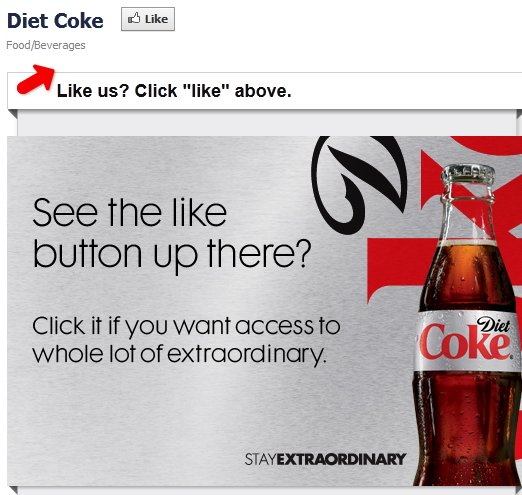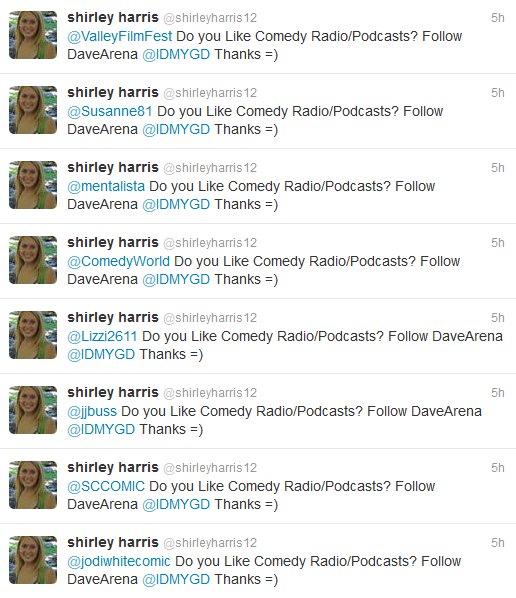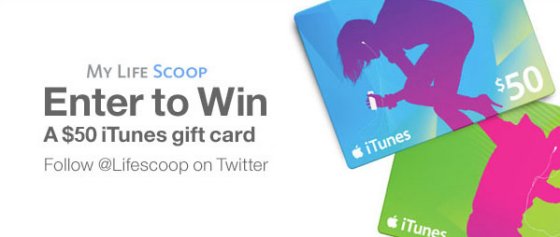The Internet is loaded with advice on how to capture more people in your social media sphere. You can find tons of articles that tout, “How you get more followers on Twitter” or “Get more people to ‘Like’ your Facebook page,” and ” Get more people to sign up for your newsletter.”
Just because these articles demonstrate proven techniques, it doesn’t necessarily mean you should heed their advice. Not every successful technique to get more followers, fans, and subscribers is necessarily right for you.
As I read all this supposedly wonderful social media advice I’m starting to realize that a technique can be “effective” yet at the same time be unethical. And if not unethical it can just be outright obnoxious.
Many of the tricks I’ve discovered to capture people in social media are either done as trickery or as a roadblock to get to something else. If you use some of these techniques these people aren’t necessarily following you because they want to follow you. They’re following you because they’ve been forced to follow you.
Are those the type of people that you want to follow you? Are you happy to use techniques that most would find obnoxious? Is the cost of a damaged brand worth a few more followers?
Ask yourself those questions before you try any of these truly effective social media capturing techniques that are monstrously obnoxious:
1: “Like”-gating
It’s when a company creates a cover image over its Facebook page that says, “‘Like’ us to see our content.” In order to view anything on our page, you must click the “Like” button. Every single visitor must first pledge allegiance to our site and become a fan. Then we’ll show you our wonderful Facebook posts. How incredibly conceited. We don’t require people to become loyal customers of our business before they walk through the front door. That would be rude. This technique definitely works and it’s also balls out obnoxious.

2: Pop-up window asking you to first sign up for a newsletter
Didn’t we all communally agree as a nation of web users that we hate pop-up windows? Why would we ever want to see one again let alone upon first visiting a website? I’m sure far more people are closing that window than giving their email address. Go ahead, check your web analytics. Was I right? OK, now you know most people don’t want it. So lose it.
3: Mass mailing your friends to “Like” your Facebook page
Uggh, thankfully Facebook hasn’t made this as easy as it used to be. To message people within Facebook you have to manually select each person. But you can still spam up to 5,000 of your email contacts. By the “spray and pray” method of audience gathering you will get some “Likes” to your business. But you will also piss off far more people. These are people who probably had an affinity for you and your business brand. With this crass and careless self-promotion, their opinion of you just dipped a little.
4: @replying people with the same follow request
Every now and then I’ll get an @reply from someone I don’t know saying, “@dspark you should check out this and follow this user.” I then click through and see that they’ve sent the same message hundreds of times each with a different @USERNAME. That’s all they’ve been tweeting out from that account. It’s because we are so hyper responsive any time someone @replies us. Far more so than if they sent the same information via email. So if you want to get someone’s attention, @reply them on Twitter. Yes, you got my attention, and now I’m ignoring you and the site and user you just recommended.

5: Requiring people to follow you on Twitter just to enter your contest
This is a total bottom feeder move. By requiring people to follow your Twitter handle just to enter your contest, all you’ve proven is you’ve captured people who want to win an iPad. Congrats.

6: Spamming friends to recommend you on LinkedIn
Luckily I haven’t seen this technique in a long time, but it used to happen daily. Sadly, you can still do it. LinkedIn allows you to spam up to 200 of your friends asking for a recommendation. Here’s a better recommendation: don’t be a shmuck.
7: Facebook apps that require you to first install the application just to see content
One of the wonderful things about social games and social apps is that it can be costless to acquire new users. The sheer act of using the application requires one to interact with others. For example, one application lets you send a virtual gift to a friend. In order to actually see and receive the virtual gift you must first install a Facebook application. Seems a long way to go to see an icon of a birthday cake, but sadly people do it. I don’t. It’s a pain in the ass. The person on the giving side probably doesn’t realize their gift is being held hostage until the app is installed.
8: Social games that require you to recruit new users just to progress in the game
In the iPhone game Tap Zoo there are challenges that require the player to email four friends to “check out this game” and connect with your Facebook friends. How annoying. I’m sure I’m going to get a bunch of people saying, “You’re an idiot David. That’s how social games are constructed.” Well, I guess that’s why I don’t play them. Just because that’s how they work and the industry is making billions off of pyramid scheme-like growth, it doesn’t mean I have to like their Scientology-style recruiting tactics.

9: Spam friending on LinkedIn and Facebook
This has sadly grown at a monumental pace. Fortunately, Facebook has offered the “subscribe” feature so people can “follow” without being “friends.” Still, we’re all subject to people receiving non-personal requests via LinkedIn and Facebook to connect. It’s amazing how people don’t bother to use that opportunity to send a personal message. It’s worse when you do reply and they don’t respond.
As I have discovered, 25 percent of the people who “friend” me on Facebook refuse to respond to personal messages. My friend Josh Weinberg, Founder of the Digital Life Consulting Group will receive LinkedIn friend requests from people he doesn’t know. If they’re in his field of interest he’ll send back a message saying he’d like to connect on the phone. In the 20 messages he’s sent, no one has responded.
Agree with my list? Disagree with it? Got some other obnoxious social media capturing techniques I missed? Let me know.
Stock photo of annoyed woman courtesy of Shutterstock.




